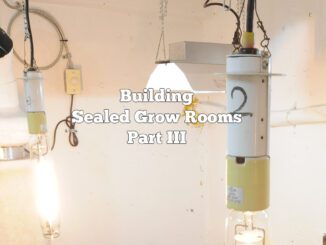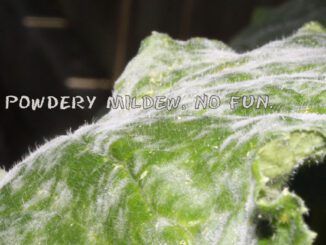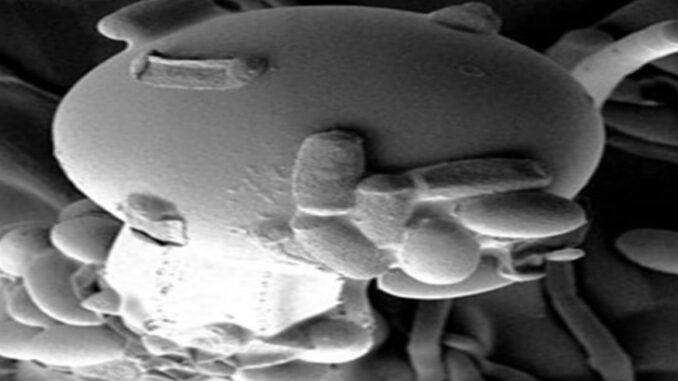
Grow Room Powdery Mildew
Microbial Contamination Management for Indoor Agriculture
By Jason Hadley & Skye Hanke
Grow room powdery mildew can have a negative impact on the quality and plentiful yields that have always been the preferred results for Indoor Agriculture. Changing market needs as they pertain to production methodology, regulatory compliance, and customer preference have begun to guide Cultivation facilities to look toward meeting higher standards such as those found within Food and Pharma Manufacturing. In other words, industries who operate cleaner to begin with at every step of their process. 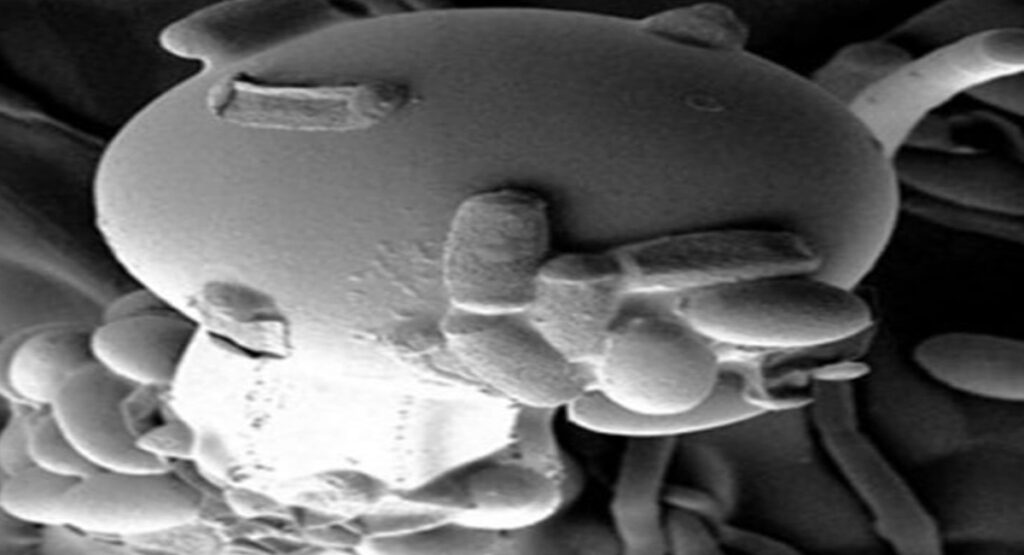
Above: Powdery Mildew spores living on a plant’s trichome.
In the case of pathogens such as grow room Powdery Mildew, we no longer have to wait until you see a visible outbreak to begin deploying a solution. By understanding the problem of grow room Powdery Mildew or any plant other pathogen under the context of Prevention and Risk Management, visible outbreaks can be greatly reduced if you address and curtail the underlying root causes that allow Powdery Mildew to invade Indoor Agriculture facilities to begin with.
[quote]at the microbe scale such as Powdery Mildew and even smaller spores such as those in the Aspergillus genus, a crack in the floor, the gap between the wall and the floor to us, is football fields wide to them. [/quote]
Nature of the Beast
To understand how to eradicate Powdery Mildew, it helps to have a basic understanding of the pathogen’s reproductive cycle and behavior.
Powdery Mildew is a fungus, and while there are many variations of it, many of them have adapted to specific plants, while others have a wide range of host organism opportunities. In layman’s terms, when a Powdery Mildew spore finds a sufficient host, it will begin to root and deplete the plant of nutrients using a root structure below the surface, which will then fuel the production of a spore chains above.
Those spore chains produce at a volume that gives the appearance of fuzz on a leaf surface when seen with the naked eye, yet under magnification are 1000’s of spores ready to take flight. That said, Powdery Mildew is obligatory, meaning once the host dies, the Powdery Mildew goes with it. However, the spores that dislodge and are carried by airflow can continue to find a new surface to root on, and thus begin the process again.
What a responsible Facility Operations Manager will want to know when it comes to combating, detecting, and preventing grow room Powdery Mildew and plant pathogens is:
How did it enter?
How can I find it?
What causes it to thrive?
What allows it to travel?
How Powdery Mildew Travels
You may be asking how Powdery Mildew got into your facility in the first place, and that’s a great first step; discover how it enters so you can manage those risks to prevent future outbreaks. Keep in mind that Powdery Mildew, as with all plant pathogens, is merely an opportunist. It will find any way it can and take advantage of all resources available to it as it has been doing for millions of years. That means you should be aware of what’s growing around your garden such as brush that may be infected with a Powdery Mildew species compatible with what your facility produces.
Likewise, if you have neighboring facilities and a negative pressured facility, are you possibly pulling Powdery Mildew in from a neighboring facility, greenhouse, or field? Could Powdery Mildew be hitching a ride on your incoming genetics? Could they be entering via the consumables such as bags of soil as is often the case with Aspergillus? Could Powdery Mildew be coming in on an insect present in your building? Or, what about your employees themselves who live in home environments with similar vulnerabilities that they then bring to work? Discovering how a plant pathogen enters, or determining what’s known as the Vector of Transmission will help you reduce risks to your garden, your crop, and your profitability.
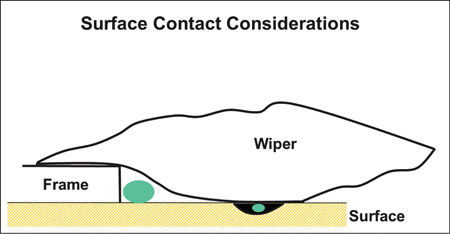
While a plant pathogen such as Powdery Mildew has some telltale signs that it is preying upon your garden, the visible outbreak is likely only a fraction of the spores that are floating about in the air and living on other surfaces. To solve such as a problem you need to discover the places within your critical areas that could be harboring it.
Spore Counts
There are several methods to test for the presence of grow room Powdery Mildew and other plant pathogens. Depending on the area to be tested, and budget permitting, you should test as much as you can everywhere you can. The most common area for Powdery Mildew spores to reside, to the surprise of many, is in your air. At only 30-50 microns in size (smaller than the width of a human hair and barely visible to the naked eye if at all), the empty air volume in your critical areas can be a hotbed for Powdery Mildew spores to remain continually aloft in your air. Much of this is due to Indoor Agriculture’s use of Turbulent Airflow, or better stated, the use of HVAC and supplemental fans, as well as continual opening of doors within critical areas and the subsequent foot traffic.
A device for testing air quality often used in Pharmaceutical Cleanrooms is called a Particle Counter. This device takes a sample of the air, runs the particles past a laser, sizing and counting them on a digital display by micron size. Once you learn the standards of regular air, this device can be the early warning signal that something is pushing particles into the space such as the production of spores.
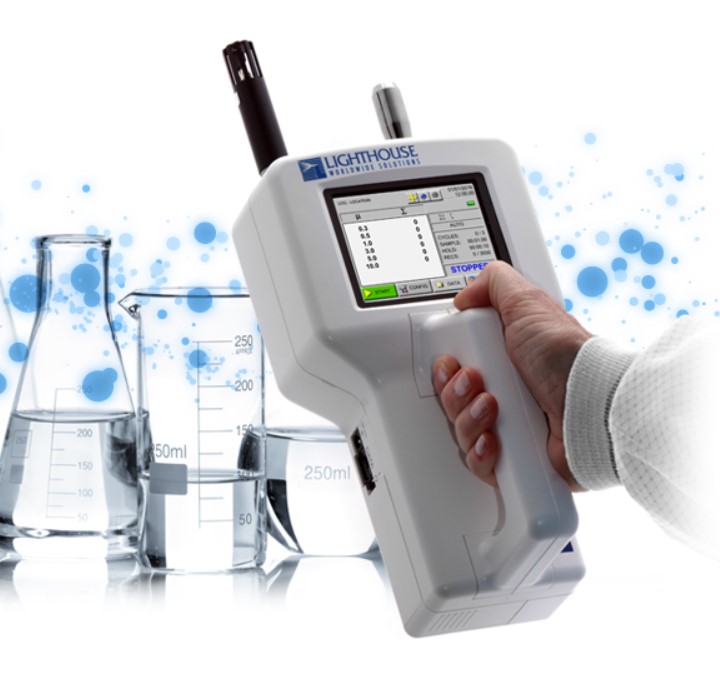
The next step after finding abnormal particle counts in a given area is to test for grow room Powdery Mildew through the use of a Spore Trapper or Bio Pump.
These devices are common within Home Mold Remediation, and pull a steady sample of air onto a sample plate (commonly called a cassette) that one can send off to a lab for testing. For testing surfaces, one can deploy a swab sampling kit or piece of clear tape, which can be taken from walls, tables and trays, and even the clothing your employees walk in wearing. All of these samples would be sent in for analysis, and working with your Industrial Hygiene lab, they can suggest the best testing methodologies that provide the greatest likelihood of finding Powdery Mildew and other offending plant pathogens.
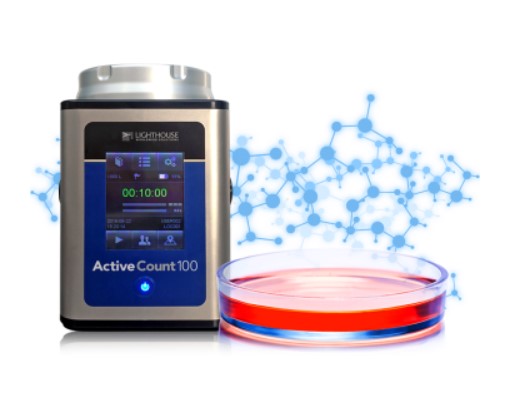
Materials & Powdery Mildew
Now that we’re narrowing down how it got in and where it’s currently present, we have to look at the conditions and processes within a facility that allow it to thrive. The first thing to eliminate in terms of microbe risks is any organic material that isn’t the plant itself.
Mold loves wood, and that would be the first thing a Facility Manager should consider; either removing wood and replacing it with synthetic materials, or applying a heavy epoxy to seal the wood from exposure. Second to that, replacing bamboo stakes and organic fiber trellis netting for a synthetic material should also be a priority. On that topic, one source of organic matter to also consider is exterior landscaping that may be harboring problems that make their way into your building.
As we look more at the facility at large, would a walk-through reveal water damage spots or condensation drips? Looking at the floor, is your floor sealed, free from cracks, and coved (rounded) from the floor to the wall? Keep in mind, at the microbe scale such as Powdery Mildew and even smaller spores such as those in the Aspergillus genus, a crack in the floor, the gap between the wall and the floor to us, is football fields wide to them.
When you look at some of the processes that allow microbes to thrive, one would be served to have an eye for points of cross contamination. Just a few examples to be mindful of include making sure tools are cleaned before and after use and returned to their regular spot, that work areas in critical parts of the facility are disinfected before and after use, and that dead plant matter falling onto beds and floors is meticulously policed. Of course, we also have to look at the environmental conditions with an eye for Risk Management.
HVAC Systems & Powdery Mildew
Among the main considerations is to ensure your temperature and humidity are in balance and that sudden swings at changes in photoperiod are accounted for. However, an equally important but often overlooked consideration is the level of particle filtration within the HVAC system. Again, it cannot be overstated that Powdery Mildew spores often airborne, therefore ensuring the filters in your HVAC system are rated for the particle size you need to remove from the environment (your wanting to eliminate or remove anything 1 micron and up), changing them on schedule, and changing them out using the Bag-In/Bag-Out method to reduce reintroducing microbes into the facility. A word of warning however, there is a limit in your ability to increase filtration with heavier duty filter cartridges. Should you use a filtration cartridge that’s heavier duty than your system can handle and particularly when not changed often enough, you’ll begin to see a decrease in cooling power, which stresses the HVAC system to work harder in order to push that air, and can lead to mechanical failures that effect critical areas of your facility.
Specialized Air Filtration Solutions
To solve this problem, supplemental air filtration designed specifically to remove particles from the space, and can provide a plug-and-play solution to supplement inadequate filtration without interfering with your current air handling system. Moving on to the less glamorous but no less important in the consideration of processes, we look to cleaning practices, specifically disinfecting for microbes. Some of the key parts we can take from Food and Pharmaceutical cGMP (current Good Manufacturing Practices) with regard to cleaning would be to surface cleaning for dirt before disinfection, choosing the right cleanser for the job, making sure it’s being used as directed, that cleaning is done top to bottom and back to front with a 20% overlap, that cleansers are allowed to remain on a surface for the manufacturer’s contact time, that those cleansers are rotated to prevent bio-resistance, that safety/protocols and clear directions are in place, and that the work is documented and periodically sampled to validate work and detect new problems.
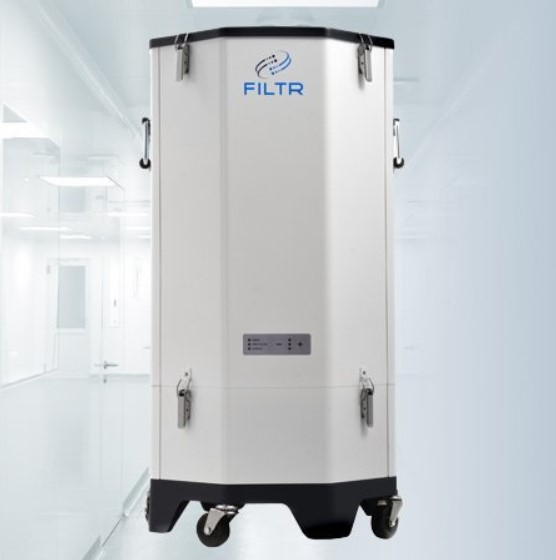
Shop Vacs, A Grower’s Friend or Foe?
Finally, let’s talk about shop vacuums, which are great for cleaning messes, but continually shoot out particles some of which your plants will care about. Aside from the dream of a central vacuum system, more modestly scaled and equipped facilities would be advised to have wet and dry vac dedicated to each room, not switch rooms or use the dry for wet applications, and change out the filter often (show of hands who just said, “What filter?”). When we look at the facility as a whole and how microbes can thrive, the building and what goes on it can have allow problems to persist that have a negative effect on the production quality and quantity, and not to belabor the point, profitability.
How Grow Room Powdery Mildew Travels in Cultivation Facilities
Lastly, we look at considerations of how Grow Room Powdery Mildew can travel, and some of the areas where Cultivators can improve their game by reducing microbe spread between rooms and work areas. When considering the travel of the microbe, you have to start at all of the entry points. If these areas are negatively pressurized, you stand a chance of pulling microbes in. Again, we also want to consider if the HVAC system may be helping microbes move about, and by adding supplemental air filtration, you’re reducing the “particle pressure”, or the volume of particles within the soup of your air.
To address another way microbes can travel, you have to come to terms with the fact that to your business, employees and visitors are microbe risks—particularly if they also maintain a home garden. Therefore, the big questions become are you stopping the travel of microbes on people by mandating everyone arrive at work showed and do diligence toward preventing their home molds from entering?
You may want to consider requiring employees enter through their own door and through a gowning areas supplied with adequate PPE. As they go about their day, are you avoiding dirty foot paths over clean areas or otherwise minimizing hallway travel? This particular point has several suggestions within it being that you can schedule tasks to keeps an employee in one room short of breaks, if every room had their own color-coded tools and supplies they wouldn’t be running around trying to find where they left the broom, and you can deploy using tacky mats to reduce particles on shoe bottoms and casters on your carts.

This last one is a personal favorite suggestion and it’s a cheap fix with huge microbe control rewards; the hydraulic door closer—please stop leaving your critical area doors open as it increases the time particles can exchange with hallway air. Auto-closing doors are the failsafe enforcer to airborne microbe travel where training employees to always close doors doesn’t take. In the spirit of Microbe Control, Powdery Mildew and other plant pathogens are only doing what they’ve been doing for millennia, and it’s simply taking advantage of any opportunity to find a suitable place to root. Our job is to reduce those opportunities to travel.
Practice Protocols & Prevention
To put a fancy bow on this and to inspire some ideas for your facility, when it comes to Microbe Control versus plant pathogens that can affect your business, the best defense is to assume and act as if you already have it. You’ll be more diligent and in constant attack mode, which is essentially where they are with you. While a variety of Microbe control considerations have been discussed, you now have a broad-ranging checklist of fixes and risks to keep an eye out for, and just getting started with above is a fantastic first layer that will lead to the kind of crop success that invites scaling up and expanding when you grow smart from the start.
About the Contributors
Jason Hadley fell into the Indoor Commercial Agriculture space quite by accident, but took to it like a duck to water. Playing all positions on the field from Facility Manager to Janitor–be it his own projects or contract work, Jason has lived every pain point Horticulture experts have experienced, and finding a home at FILTR (FiltrScience.com), now helps operators at all experience levels understand, detect, and protect themselves from microbe issues using the same tactics, strategies, and equipment utilized in Pharmaceutical Manufacturing. Spreading a gospel of under-utilized but much needed knowledge, Jason is invested in his clients’ success from the start, and specializes in translating cleanliness practices within regulatory environments into digestible and practical information that industry experts can apply immediately and see direct results of in their profitability and expansion
Skye Hanke is a third-generation grower and over the past 25 years he has worked with many companies in the indoor gardening industry doing brand development and product design with special focus on new technology development. His experience as an indoor horticulturalist and product designer has allowed him to identify and solve problems that occur in indoor gardens and he has designed several custom processes that help growers increase productivity and consistency. Skye is optimistic about where technology and innovation is taking the industry and will continue to integrate technology and traditional growing techniques that help gardeners ensure that all their plants receive the personal attention they need.

